6. Pupation and Emergence.
Lower humidity and higher temperature for prepupae.
Medium humidity and higher temperature for pupae.
Stable temperature and a dark environment for newly emerged imagoes.
Miyama's pupation chambers are just like cocoons, created at a corner of the container. The time it takes from prepupa to emergence is proportionate to the temperature. Miyama takes longer when colder, while relatively shorter when warmer, to go through ecdysis. This period is very delicate, so it is better to warm them, to make this period pass as quickly as possible, improvng survival rate. Also it is better to keep the humidity lower for emergence. If it is too high, it takes longer for their wings to get hard and dry, leading to mutational emergence.
Rearing prepupae
Control the humidity by placing and removing a sheet of wrap or soft plastic between the lid and the container to avoid excessive dryness. Keep the moisture level adequate, not soaked or dry. For comparison, you can remove a sample of the mat and let it dry completely. The color will become very different, almost whitish. Use this dry mat as a reference, and try to keep the mat in the container adequately moist. If it is too wet, on the other hand, many prepupae may die.
Rearing of pupae(1)
Miyama makes its pupation chamber at the bottom or at the corner of the container. Most Miyama chambers can not be observed from outside the case, as they try to choose such a location. So if you happen to find one chamber, you can presume that all the rest have pupated as well. Females pupate about 3 months earlier than males. And among the females, some have emerged exceptionally early (4 months earlier than others), and become active. This is common also among other stag beetles. They seem to have this kind of early group on purpose. In my case, this rate was about one in 30.
Rearing of pupae(2)
When it pupates, put it in the greenhouse to promote early emergence. There is even a risk of death if the temperature drops below 15 degrees. There is no merit in prolonging the pupa period, but disadvantages such as shrinking and death.
Emergence
If the pupa which once used to be slightly visible from outside the bottle can not be observed any more, you have good reason to believe it has emerged already. That is because the imago moves inside the chamber so that the plastic wall gets dirty. If it starts to mold in the chamber, I am sorry, but the pupa is probably dead.
Retrieving the imago
I couldn't take pictures of my prepupae or pupae. I was too afraid to disturb them, as it was my first breeding experience. I am planning to take pictures this year, and rewrite this rearing manual with those pictures. It is too sad to have no pitures, so I have included pictures of imagoes that I retrieved in Feb. 1998, and which were born in 1996. Although their parents were the standard Fuji-type found in Miyagi prefecture, some Ezo-type emerged among their offspring, too. Also remarkable was that these Fuji-types looked totally different in shape from their parents. Harvest is the enjoyable time, after all your work.
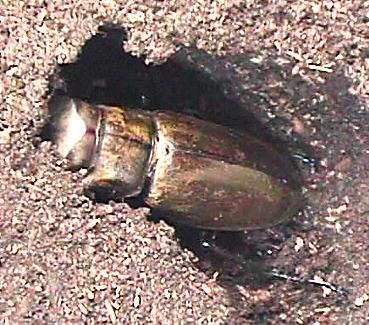 Retrieving the imago 1.
Retrieving the imago 1.
Spread some newspapers, remove the lid, hold the rearing container upside down on the newspaper, and hit the bottom. The entire mat tumbles out as one clod. Now you see the male in hibernation in its chamber. Although it looks as if it is standing on its legs, the entire mat is now upside down. It usually lies on its back in the chamber.
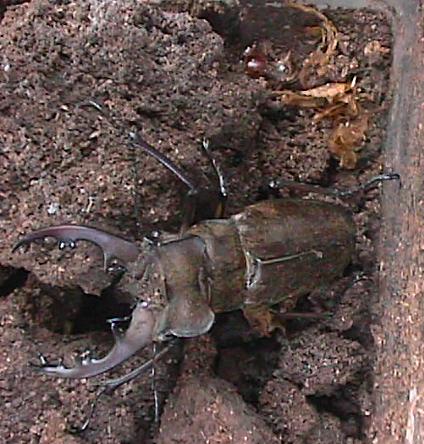 Retrieving the imago 2.
Retrieving the imago 2.
If the mat sticks to the wall and doesn't come out, start digging from the top carefully. If you hit the container too hard on the bottom, you may break it. I wonder if I dried it too much. It's very hard and looks like lava. "Oh! This imago is gorgeous!"
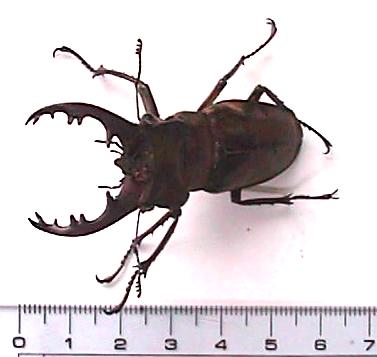 Retrieving the imago 3.
Retrieving the imago 3.
Now I can't wait to measure it! "Freeze, please!" It is 61.5mm. The shape of its teeth is rather unusual, a type not found among wild individuals. The beetle is slender but the teeth are thick, very rare. Yet it is very handsome and satisfactory.
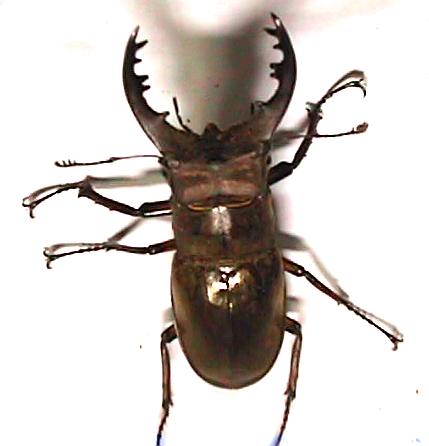
Retrieving the imago 4.
This is the Ezo-type derived from the standard Fuji-type. When you compare it with the above their teeth indicate somewhat the fact that they are brothers. It is very puzzling. I kept this one outside my greenhouse, and the lowest temperature in that environment was about 15 degrees C.
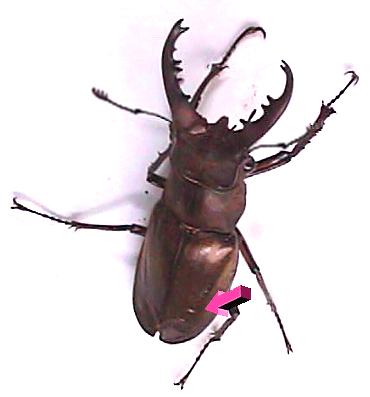 Retrieving the imago 5.
Retrieving the imago 5.
Not all of them were successful. This is an example of mutational emergence. I think the cause was extreme dryness. The pupation chamber seems to have shrunk through dryness. There were a few other mutations. Appropriate humidity is very difficult.
Retrieving the imago 6.
These are the imagoes that were born in September 1996. There were more females than males.
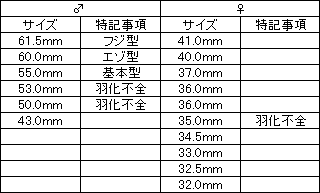
Index
 Retrieving the imago 1.
Retrieving the imago 1. Retrieving the imago 2.
Retrieving the imago 2. Retrieving the imago 3.
Retrieving the imago 3.
 Retrieving the imago 5.
Retrieving the imago 5.